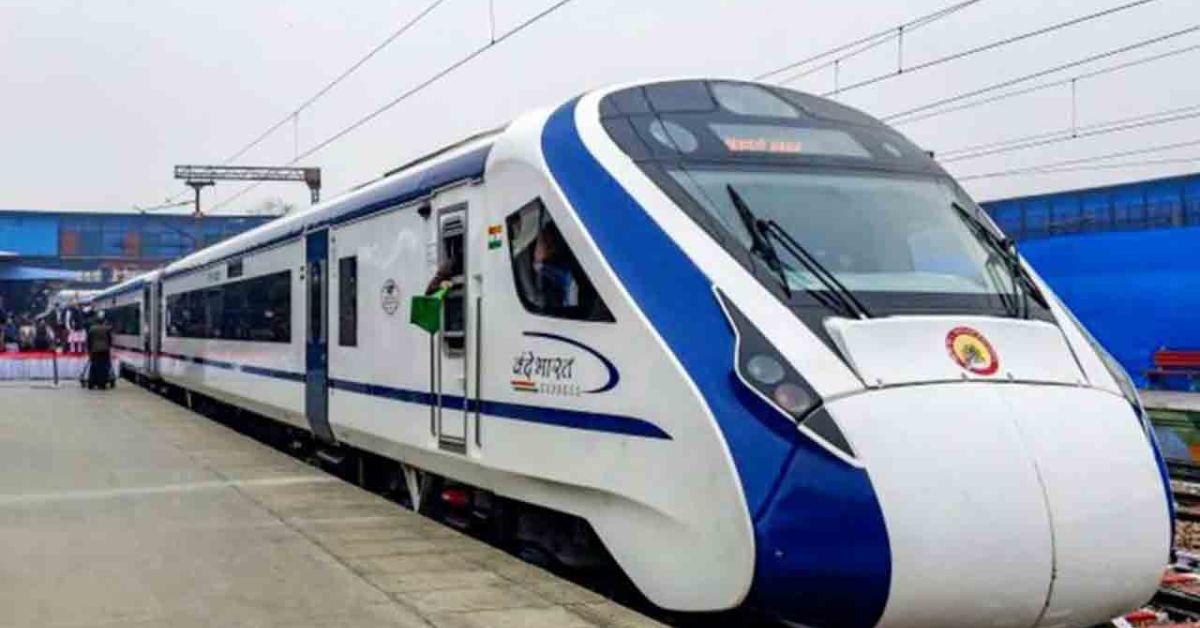Source: Business Line
Two recent developments concerning Indian Railways (IR) and Vande Bharat trains have garnered widespread attention. The first involves the Minister of Railways announcing that Integral Coach Factory (ICF) will lead the development of a standard gauge (SG) version of Vande Bharat trains. Stressing the project’s timeline for exporting these trains, the minister emphasised the urgent need for ICF to commence design work to prepare for potential exports five years down the line. This urgency arises from the lengthy process involved in manufacturing, testing, and obtaining international validation for new rolling stock.
The second announcement, made by Rail India Technical and Economic Service (RITES), outlines plans to introduce Vande Bharat trains to South American nations. Countries like Chile, Brazil and Argentina have expressed strong interest and are actively engaged in discussions with India regarding the possibility of initiating international trade involving these advanced trains.
RITES has strategically identified nations with electrified broad gauge (BG) railway systems, where minimal customisation would be required for introducing these trains. While this development is considered an initial trend, optimism abounds for its promising trajectory in the forthcoming months and years. These announcements signify a departure from past hype-filled proclamations, injecting a sense of pragmatism into the Railways’ endeavours.
Reflecting on past instances of overblown claims, one is reminded of a top executive of the Railway Board prematurely announcing Peru’s interest in Train 18 upon the arrival of the prototype train in Delhi in late 2018, overlooking the need for domestic success before considering exports or that Peru has SG tracks for which ICF had no solution at that stage.
Similar overreach was observed in an announcement of exporting Train 18 to neighbouring South Asian countries, despite their infrastructural limitations of tracks that do not have electrification or semi-high-speed capability.
Another ambitious announcement aimed to elevate Vande Bharat’s speed to 240 km/hour in an SG version, but obvious scepticism prevailed given that India does not have any SG tracks for its validation. Although expectedly there was no movement in the project, the emphasis on SG and higher speeds did hold significance for India’s global rail aspirations for two key reasons. Firstly, despite the development of the Vande Bharat, India cannot assert global leadership in rail technology unless it possesses the capability to deliver trains in SG — a standard prevalent in developed nations and increasingly adopted in medium-income countries for new lines.
High-speed line
Secondly, with the forthcoming SG 350 km/h high-speed line between Mumbai and Ahmedabad featuring Japanese trains, there is an opportunity for Indian trains to be run and validated on this track, albeit in slack time with lower speeds below 250 km/h. There is, therefore, a strong case for the Railways to challenge ICF and the associated rail industry to design and construct a 245 km/h train for this line; 245 kmph because the designs above 250 kmph impose such stringent norms which is something ICF may not be capable of today. Developing SG trains aligns with global standards and opens doors for exports to countries with electrified SG tracks and showcases its engineering prowess in the rolling stock domain.
The latest news outlining ICF’s engagement in designing an SG version of trains for potential exportation with a realistic timeline of five years is, therefore, a welcome development. Such a commitment would be in line with the government’s steadfast belief in the economic benefits of unprecedented capital expenditure on rail infrastructure. Despite recent setbacks with dropped tenders, the Railways has already demonstrated boldness in committing to large rolling stock tenders since 2022.
More significantly, RITES’ recent announcement regarding the export potential of Vande Bharat trains presents a promising opportunity. The question arises: where can we export Vande Bharat trains without undergoing extensive development and validation processes? The answer lies in countries with electrified BG routes. Apart from the Indian subcontinent, the only countries in the world with BG (or near BG, like the Iberian Gauge) routes are Spain, Portugal, Argentina, Brazil, and Chile. Spain, being far more advanced in rail technology, would not be interested in Vande Bharat trains.
However, the South American countries present a promising opportunity. While they may consider themselves more aligned with European ethos, diligent marketing efforts can sway their preferences. Among these nations, Chile stands out with its robust economic strength and BG tracks well-suited for our trains with minimal customisation, thanks to their 25 KV electrification system.
India should take a bold step forward by offering a train free of cost for tests and trials in these markets, with a commitment to import trains upon successful technical and commercial validation. Given the substantial capital expenditure in the range of ₹2.6-lakh crore in railways by the government, allocating ₹100-150 crore for a trial train is a negligible investment.







